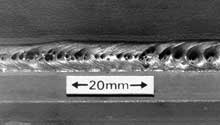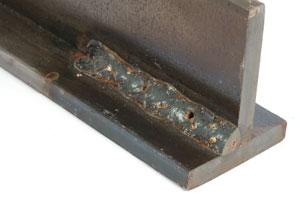Porosity in Welding: Identifying Common Issues and Implementing Ideal Practices for Avoidance
Porosity in welding is a pervasive concern that typically goes unnoticed until it creates substantial troubles with the integrity of welds. In this conversation, we will check out the essential elements adding to porosity formation, examine its detrimental effects on weld performance, and talk about the finest practices that can be taken on to lessen porosity occurrence in welding procedures.
Typical Reasons For Porosity

An additional frequent perpetrator behind porosity is the visibility of contaminants on the surface area of the base steel, such as oil, grease, or rust. When these pollutants are not effectively gotten rid of prior to welding, they can vaporize and come to be trapped in the weld, triggering defects. In addition, utilizing unclean or damp filler products can present contaminations right into the weld, adding to porosity concerns. To mitigate these typical root causes of porosity, extensive cleaning of base metals, correct shielding gas choice, and adherence to ideal welding specifications are vital methods in achieving premium, porosity-free welds.
Impact of Porosity on Weld High Quality

The visibility of porosity in welding can considerably endanger the structural stability and mechanical residential or commercial properties of welded joints. Porosity produces gaps within the weld metal, damaging its overall strength and load-bearing ability. These spaces serve as anxiety focus factors, making the weld extra at risk to cracking and failing under applied tons. Furthermore, porosity can lower the weld's resistance to rust and other ecological elements, additionally lessening its long life and efficiency.
Among the key repercussions of porosity is a reduction in the weld's ductility and sturdiness. Welds with high porosity levels have a tendency to exhibit lower effect toughness and decreased capability to deform plastically prior to fracturing. This can be specifically concerning in applications where the welded parts go through dynamic or cyclic loading conditions. Porosity can impede the weld's ability to her response efficiently transfer forces, leading to premature weld failing and possible safety and security dangers in important structures. What is Porosity.
Ideal Practices for Porosity Prevention
To enhance the structural honesty and top quality of bonded joints, what certain steps can be executed to minimize the event of porosity throughout the welding procedure? Making use of the right welding method for the particular material being welded, such as adjusting the welding angle and weapon placement, can additionally avoid porosity. Regular examination of welds and instant remediation of any concerns determined during the welding procedure are vital practices to protect against porosity and generate premium welds.
Significance of Correct Welding Methods
Executing correct welding methods is critical in ensuring the architectural integrity and top quality of welded joints, building on the foundation of effective porosity avoidance measures. Welding methods straight affect the overall stamina and resilience of the bonded structure. One vital aspect of correct welding techniques is preserving the appropriate warm input. Extreme heat can lead to increased porosity as a result of the entrapment of gases in the weld pool. On the other hand, not enough heat might result in incomplete blend, producing possible powerlessness in the joint. In addition, utilizing the suitable welding criteria, such as voltage, current, and travel rate, is essential for accomplishing audio welds with minimal porosity.
In addition, the choice of welding process, whether it be MIG, TIG, or stick welding, ought to line up with the details requirements of Discover More the project to guarantee ideal outcomes. Appropriate cleaning and prep work of the base steel, as well as picking the appropriate filler product, are additionally essential components of competent welding techniques. By adhering to these best methods, welders can minimize the threat of porosity formation and generate top notch, structurally sound welds.

Evaluating and Top Quality Control Procedures
Quality control steps play a critical function in verifying the integrity and integrity of welded joints. Examining procedures are vital to identify and prevent porosity in welding, ensuring the strength and resilience of the end product. Non-destructive testing methods such as ultrasonic testing, radiographic testing, and visual evaluation are typically employed to identify potential defects like porosity. These strategies permit the analysis of weld top quality without compromising the integrity of the pop over to this site joint. What is Porosity.
Post-weld examinations, on the various other hand, evaluate the final weld for any type of issues, including porosity, and verify that it meets defined criteria. Executing a detailed top quality control plan that includes complete screening procedures and inspections is critical to minimizing porosity concerns and ensuring the overall top quality of welded joints.
Conclusion
Finally, porosity in welding can be an usual concern that influences the top quality of welds. By identifying the common reasons for porosity and implementing ideal practices for avoidance, such as proper welding techniques and screening measures, welders can ensure premium quality and dependable welds. It is important to focus on avoidance techniques to lessen the event of porosity and keep the honesty of bonded frameworks.